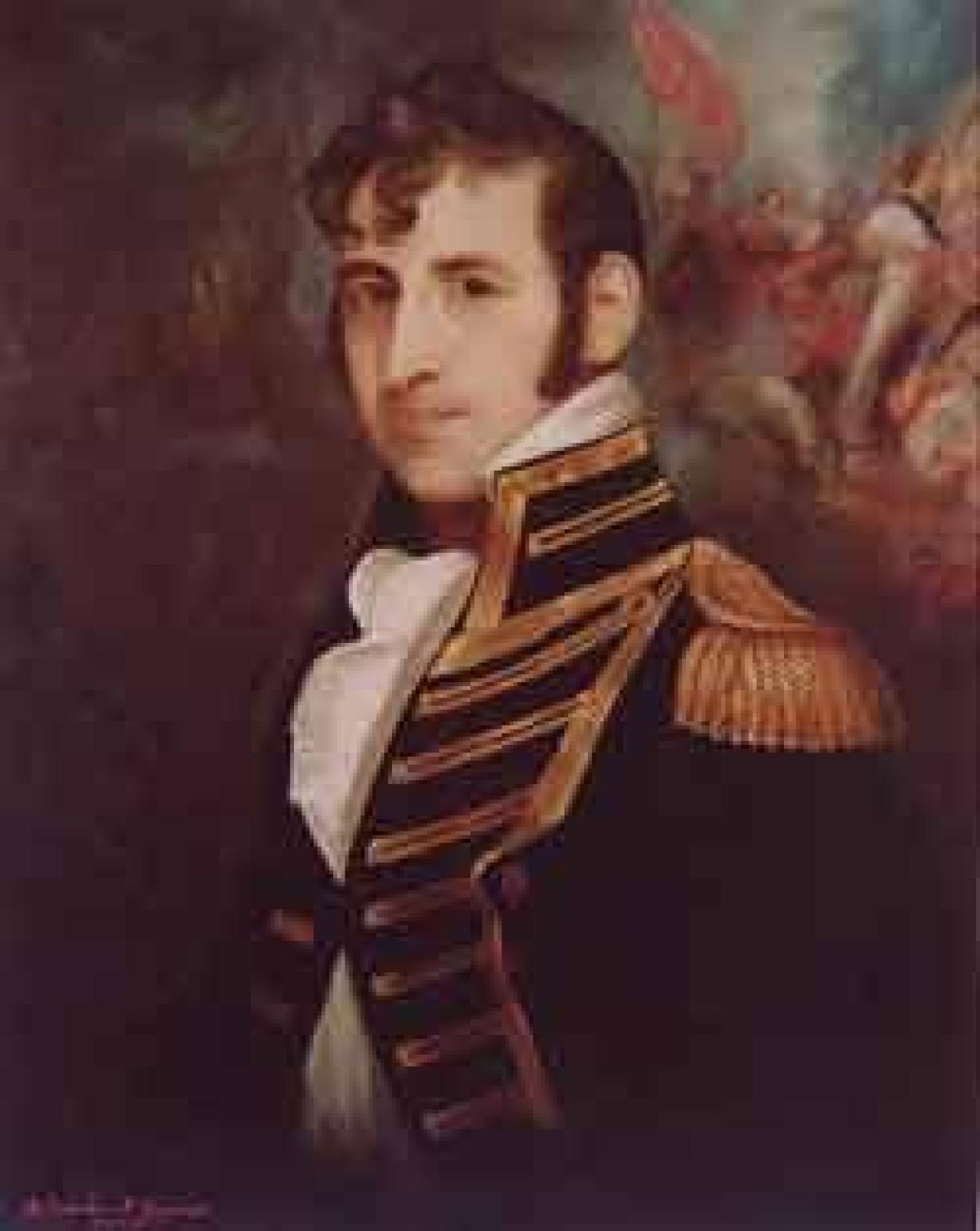"The Most Bold and Daring Act of the Age"
In 1803, the USS Philadelphia—sent to the Mediterranean to protect American shipping from the marauding vessels of the so-called Barbary states (Morocco, Algiers, Tunis, and Tripoli)—had the great misfortune of running aground while pursuing an enemy vessel and was captured by the Tripolitans.
Lieutenant Stephen Decatur volunteered to destroy the Philadelphia, rather than let her remain in enemy hands. Disguising themselves as native traders, Decatur and his men sailed a captured ketch—renamed Intrepid—sinto the enemy harbor. As they approached, they could see the Philadelphia's cannons looming ominously through her open gunports. Instead of firing, however, the Tripolitans actually handed over lines to the approaching vessel. Then someone on the frigate"s main deck suddenly cried out: "Americani!” Frenzied shouts and the rapid rustling of bare feet on wooden decks could be heard in the Philadelphia as Decatur gave the order, “Away boarders!”
It was a grisly fight. The night air was filled with the clash of cutlasses against scimitars, accompanied by the terrible cries of cleaved men. Soon, all the Tripolitans lay dead or had fled. The Americans moved quickly through the ship setting their fires, and several were nearly trapped below by the rapidly spreading flames as they returned to the Intrepid and shoved off. While shore batteries unsuccessfully hammered away at them, the Americans pulled furiously at their sweeps, distancing themselves from the roaring fire that was by now illuminating the whole harbor. As if in one last great act of defiance, the Philadelphia’s loaded cannons cooked off, and several of her rounds actually struck the nearby castle walls from which the shore batteries had been firing.
As the Intrepid left the harbor, the Philadelphia burned off her starboard quarter in one giant flame, like the magnified fire of a single match, until a massive explosion finished off the once great ship.
Miraculously, not a single American was killed. When word of the feat reached British Admiral Horatio Nelson—the most respected naval hero of the time—he called the burning of the Philadelphia “the most bold and daring act of the age.”
—Lieutenant Commander Thomas J. Cutler, U.S. Navy (Retired)
VMO-2
Aarine Observation Squadron 2 (VMO-2) was activated on 1 November 1943 at Quantico, Virginia, as the Artillery Spotting Division of VMO-251. Equipped with OY-2 spotter aircraft, the unit was redesignated VMO-2 on 1 February 1944.
VMO-2 flew hundreds of artillery-spotting missions during the fierce fighting of the Saipan, Tinian, and Okinawa campaigns in support of the 2nd and 4th Marine Divisions. After the end of World War II, the squadron operated from Nagasaki, Japan, until it relocated to MCAS Cherry Point, North Carolina, where it was deactivated on 26 August 1946.
With the Korean War build-up of U.S. armed forces, VMO-2 was reactivated at Santa Ana, California, and equipped with observation airplanes and helicopters. The squadron deployed to Japan in July 1953 and was permanently assigned to Okinawa in April 1956 with its OE-1 and HOK-1 aircraft.
VMO-2 sent two OE-1s to South Vietnam in April 1962 to support Marine transport helicopter operations. The entire squadron moved to Da Nang by May 1965 in support of the deployment of Marine ground forces to South Vietnam, becoming an all-helicopter unit in the process, operating UH-1E "Hueys.” VMO-2 was awarded the Navy Unit commendation for its support of Operation Starlight, the first major battle between a U.S. unit and a large Viet Cong formation.
VMO-2 acquired the heavily armed OV-10A Bronco observation aircraft in 1968 and the AH-1G helicopter gunship in 1969. The squadron eventually became an all-Bronco unit and operated against the enemy until it was withdrawn from South Vietnam in April 1971 and based at Camp Pendleton, California.
In 1979, VMO-2 augmented its OV-10As with OV-10Ds, equipped with sensors for operation at night. During the 1980s the squadron operated with OV-10s from the Royal Moroccan and Venezuelan air forces, assisted in drug-interdiction operations, and rotated deployed detachments to Okinawa.
When Iraq invaded Kuwait in August 1990, VMO-2 initially sent four OV-10s to Saudi Arabia in support of Operation Desert Shield. When Operation Desert Storm began in January 1991, the entire squadron flew reconnaissance and forward air-control missions around the clock and spotted gunfire from the battleship USS Wisconsin (BB-64). At the cost of one OV-10, VMO-2's 286 missions resulted in the destruction of 54 tanks, 53 armored personnel carriers, and 49 artillery guns.
VMO-2 was operating only the OV-10D+ version when it was deactivated at Camp Pendleton on 23 May 1993.
—Lieutenant Commander Rick Burgess, U.S. Navy (Retired)



